 I have always been challenged when it comes to tinsel. As a child I led the opposition to tinsel on the grounds that it was just too messy. But some friends recently bequeathed me their supply of tinsel. I vowed that I would make my peace with it by finding a way to incorporate it into wrapping.
I have always been challenged when it comes to tinsel. As a child I led the opposition to tinsel on the grounds that it was just too messy. But some friends recently bequeathed me their supply of tinsel. I vowed that I would make my peace with it by finding a way to incorporate it into wrapping.
If you like a neat and orderly wrapping table this is not the wrap for you. But, as you can see, I did find a way to apply used tinsel to a gift wrap.
First I wrapped the box in a piece of yellow paper that came from a direct-mail piece. Then I pulled out a batch of tinsel from one large ball that was part of my tinsel inheritance. I shook it out to give it a mostly vertical alignment. With my left hand I applied a strip of hot glue along the top of the wrapped box. I then placed the top edge of the tinsel onto the hot glue.
I then took a small strip of scrap paper, applied glue to it and then placed it on top of the tinsel in alignment with the underlying first band of glue. I pressed down to fix the tinsel in place.
With scissors, I made a preliminary trim of the lower end of the tinsel. Then I followed the above procedures to attach more and more tinsel around the wrap.
Next I took a piece of red-foil paper, gave it one folded edge where it would overlay the tinsel, and wrapped it around the top of the box using both glue and tape. I shook out the wrap to get red of loose tinsel. Grabbing my scissors I gave the wrap a tonsorial trim.
I folded some gold paper, rubbed on white dry-transfer letters for recipient initials.
Then I got out the shop vac and cleaned up the tinsel that littered my studio.
This wrap is very dynamic and silly when handled.
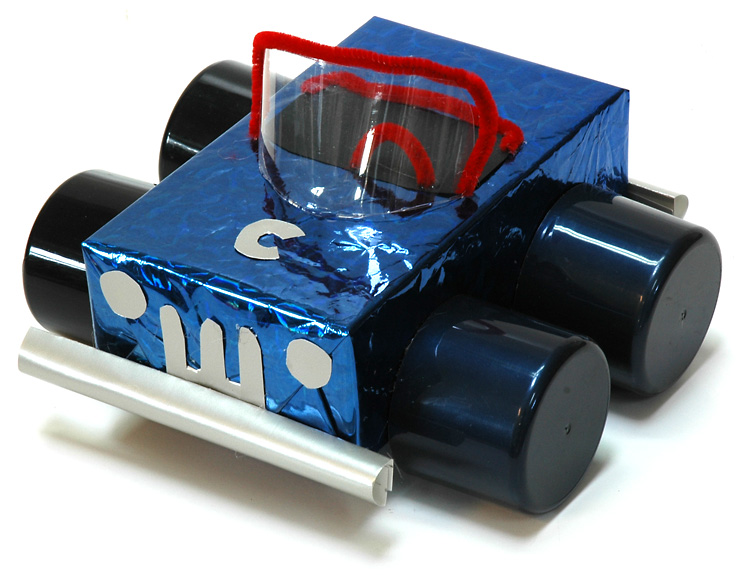 Toys are ubiquitous at Christmas. Why not a wrap that aspires to be a toy? Such are the thoughts a wrap artist may be driven to entertain on the 23rd of December.
Toys are ubiquitous at Christmas. Why not a wrap that aspires to be a toy? Such are the thoughts a wrap artist may be driven to entertain on the 23rd of December.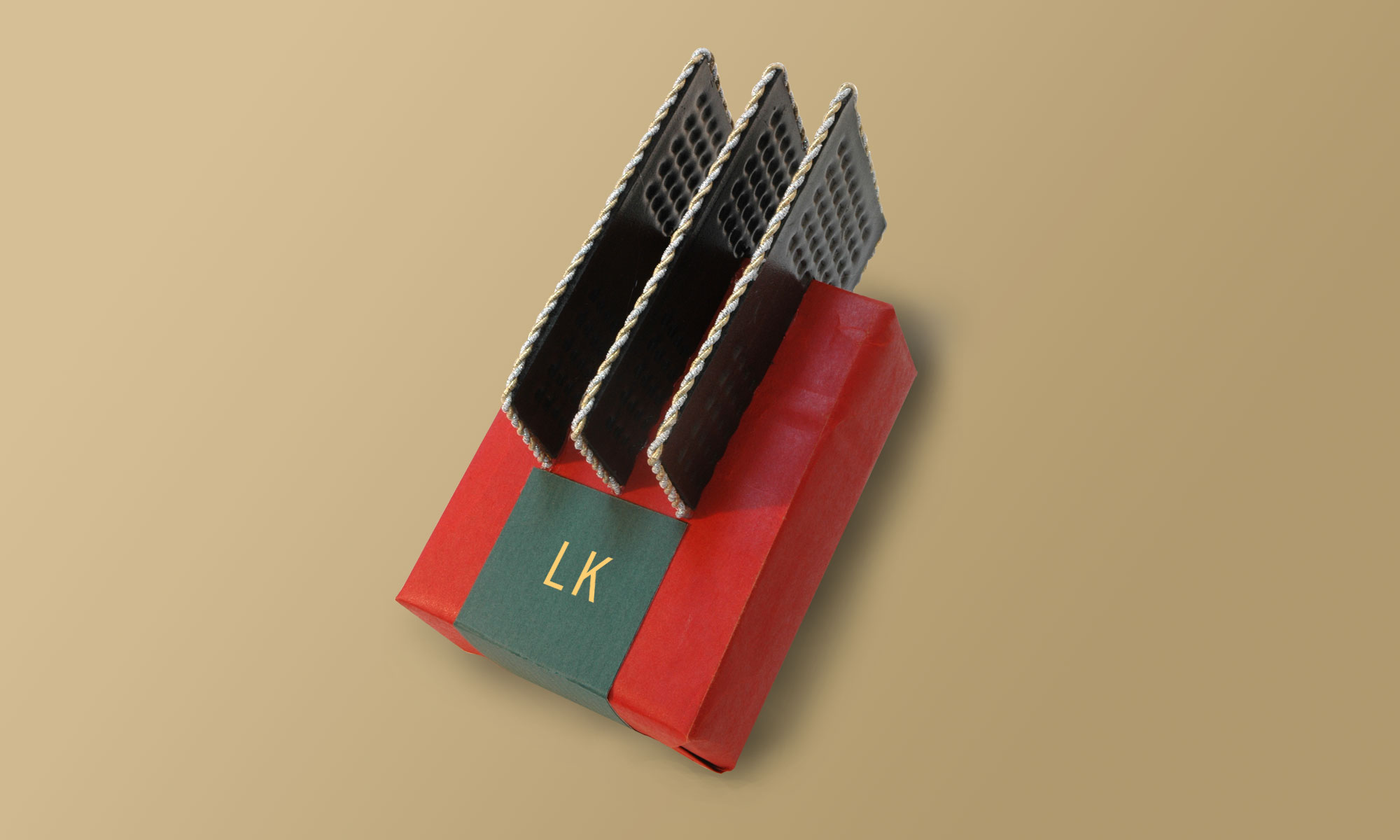

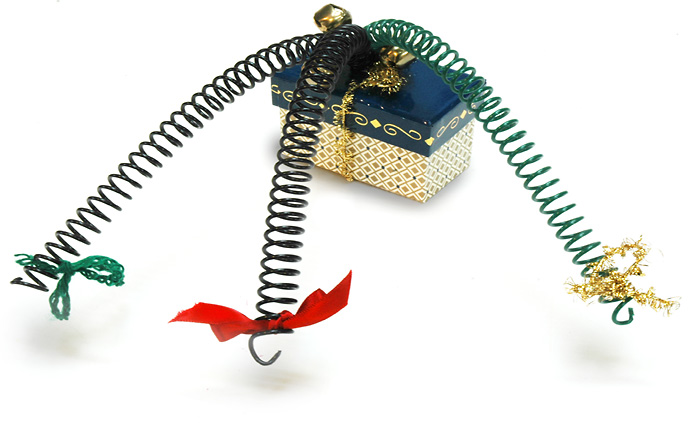



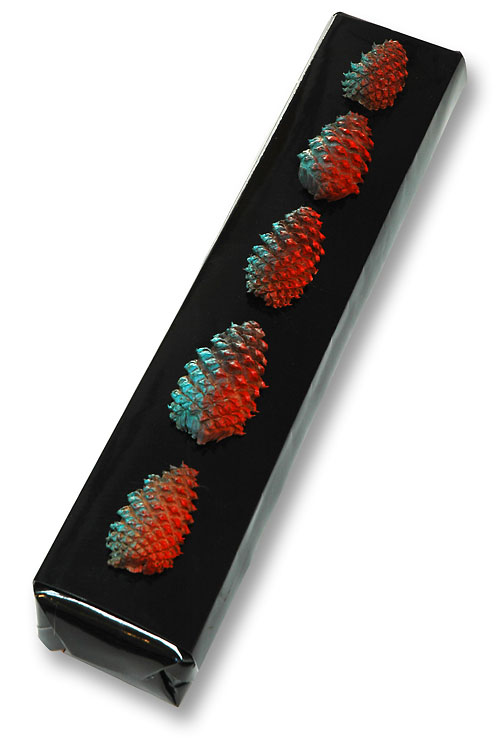
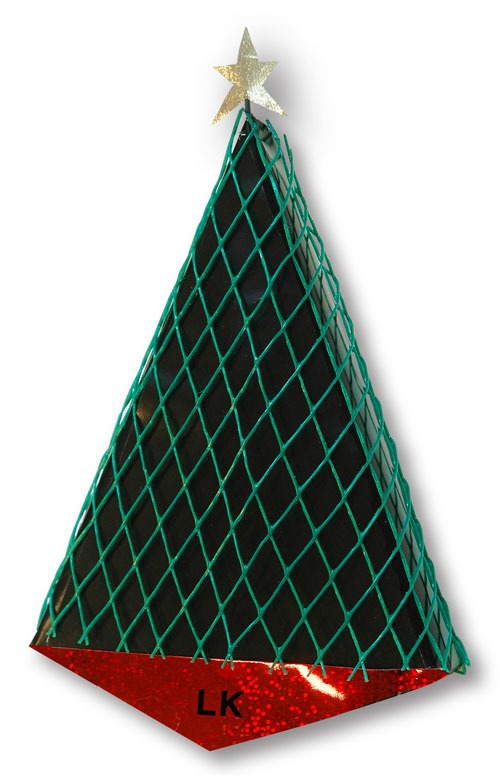
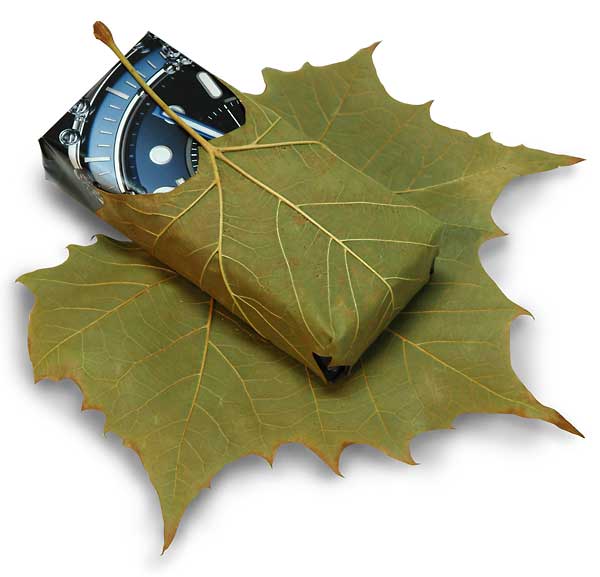 I was walking in the park when these huge leaves caught my eye. I brought them home. The gift box is wrapped in a piece of advertising. I chose a wristwatch image for its fine details of metal, glass and precise graphic forms. These machined details contrast with the equally complex but organic details in the leaves. I also chose it because autumn leaves are a poignant symbol of the passage of time.
I was walking in the park when these huge leaves caught my eye. I brought them home. The gift box is wrapped in a piece of advertising. I chose a wristwatch image for its fine details of metal, glass and precise graphic forms. These machined details contrast with the equally complex but organic details in the leaves. I also chose it because autumn leaves are a poignant symbol of the passage of time.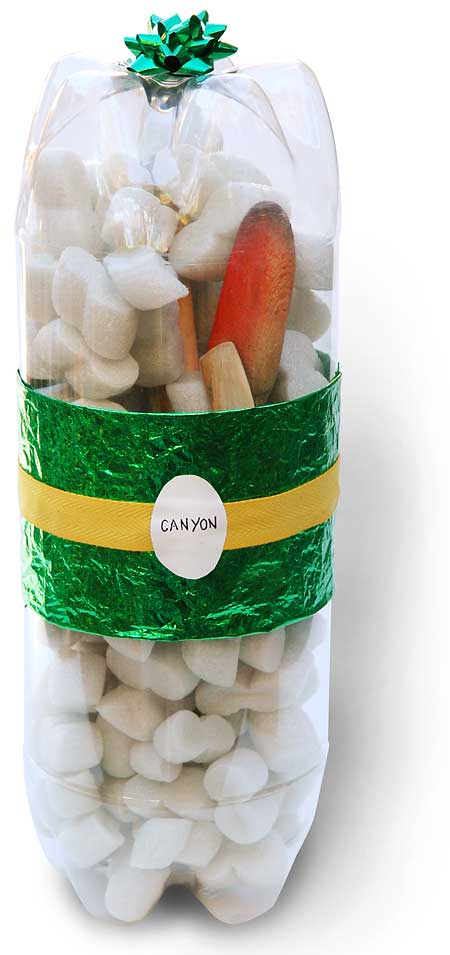 Today’s wrap embraces the 21st century’s mandate for greater transparency in all things. I was giving a small sculpture commemorating son Canyon’s 20th birthday, and I had the idea of using the same two-cylinder recycle-wrap design that I had used two weeks ago with shaving can lids. This time I would use PET soda bottles.
Today’s wrap embraces the 21st century’s mandate for greater transparency in all things. I was giving a small sculpture commemorating son Canyon’s 20th birthday, and I had the idea of using the same two-cylinder recycle-wrap design that I had used two weeks ago with shaving can lids. This time I would use PET soda bottles.